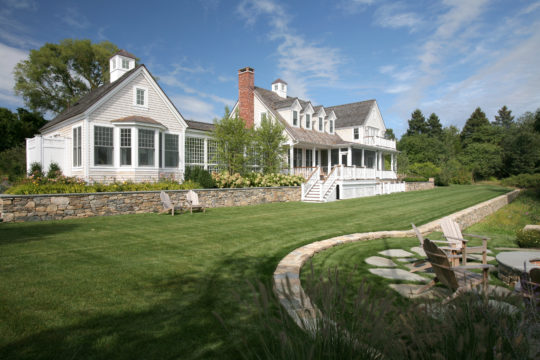Anne Rose
Outside Showers – Creating a Spa-like element in your home
It is hot and you have had a long day. Whether you have been at the beach or in the garden, a five-mile jog or long day at work; sometimes the best place to rejuvenate is in the shower. Ah, the shower; it can make one feel rested, ready to go to your next task or maybe inclined to jump back into the pool.
Have you considered adding an outside shower to your outdoor living space? Creating an outside shower maybe the key to adding an essential element to your home or in your garden. Establishing an outdoor shower zone might be determined by whether you are just washing off the dust of the day or truly desiring the experience of being in outdoor spa. They can be as practical as necessity requires or as lavish and exotic to be aesthetically appealing. When envisioning your atmosphere for such an endeavor, perhaps several plan lay outs might be determined and then a strategy can be reached for completion.
First, you might consider where it would be in proximity to your home. Attaching to 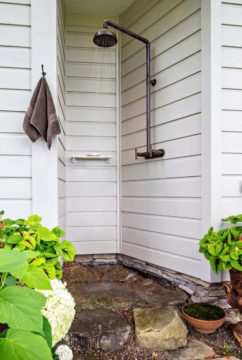 the house using the exterior sidewall as a mounting site can create an intimate space as a booth-style built enclosure or allotted area partitioned off from the rest of the house and yard. Perhaps an independently free-standing enclosure will be perfect next to a garden area. Here are some ideas from www.onekindesign.com that are worthy of incorporating into the yard-scape.
the house using the exterior sidewall as a mounting site can create an intimate space as a booth-style built enclosure or allotted area partitioned off from the rest of the house and yard. Perhaps an independently free-standing enclosure will be perfect next to a garden area. Here are some ideas from www.onekindesign.com that are worthy of incorporating into the yard-scape.
As seen in the photo on the right, a partition wall has been added to section off an area in a corner garden area of the house without a screen. Also, the shower hardware has been mounted directly on the side of the building wall for easy access to plumbing.
Looking to the left photo, an entire exterior wall of the house has been dedicated to an outside shower zone with rain shower head own permanent outer wall space including a niche. While looking at the photo below, a cozy partially walled off area attached to the main house is complete with a custom stone floor and seating area and a waterfall shower head. Simple, basic yet well designed.
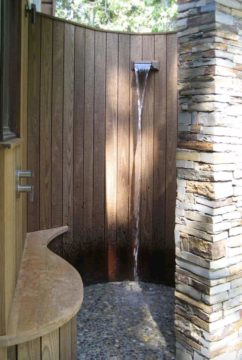
Creating your own shower environment is a matter of taste and what you determine as requirements for outside bathing. While these photos shown above are borderline exotic showers, here on Cape Cod, its typical to have a red cedar or mahogany enclosure with large blue stone or formed concrete slabs or even a mahogany slatted floor for drainage. And yet again, it is a matter of preference. A consideration is material used to build the structure which includes the visual aspect of the final product as well as the endurance and permanence of the structure.
Gable Building has constructed several bathhouse styled enclosures along these lines that match the exterior decor in both the visual aspect of the structure as well as customer preference. Some have been designed to blend so well you almost do not recognize it as a separate function from the living space of the house.
As seen in these photos, the shower is built on the far left of the house (shown in left photo) and is almost invisible compared to the grand landscape of the backyard. However, it does serve its purpose well as it is accessible from just outside the master bedroom (shown on the lower right).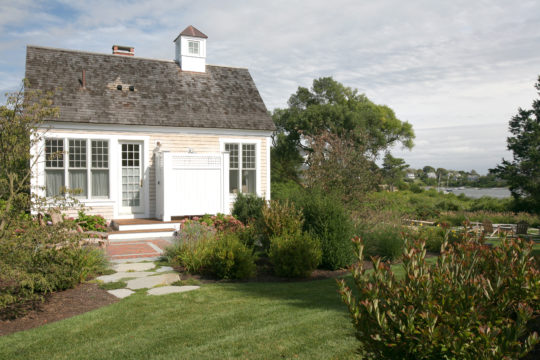
In the photo shown below, there is a whole corner of the house dedicated to the outside shower zone, clearly visible as such a space in the back portion of the house. This bathhouse enclosure is also close to an outside entrance of the house. 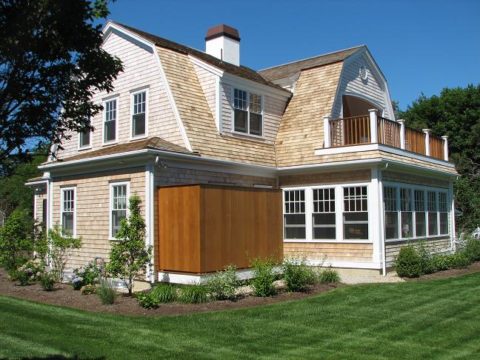
A similar design is shown below (right) with an additional Pergola enclosure on the top. Since this is directly under two second floor windows, the pergola covered top allows for a more private experience in the bathhouse. 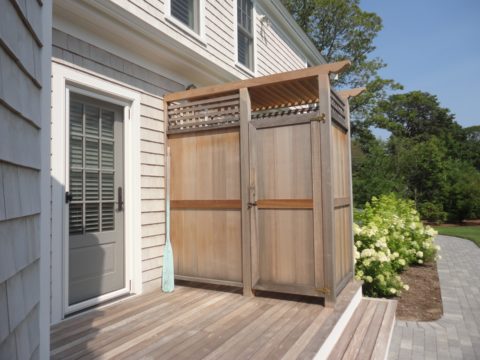
Depending on how elaborate you want your design to be, an outside shower structure can be done as a DYI project. But it’s required to have a good basic knowledge of plumbing for the water system and then adding a structure around the shower fixtures, including walls, a platform for standing on, doors (if so desired) and adding accessories like a towel holder, shelving and other features. Anyone who isn’t as handy or would prefer not to get into the “nuts and bolts” of building, can hire a contractor who can set up the plumbing and building aspect of the design and before you know it you have your very own outdoor spa. Gable Building is there to lend a hand. Let us know if this is a project that you would love to have but prefer to have a professional complete the task. And then, all there is left for you, the home owner, to do is enjoy your new back yard outside shower.
Footnotes:
Source: capecodshowerkits.com
https://onekindesign.com/2019/06/14/outdoor-shower-ideas/
Choosing Your Countertop Surface Material
How exciting! You’ve decided to update your kitchen and expand space by adding an Island for family gatherings and expand your food prep area, with its own sink or maybe a grilling station. Such a grand idea for additional living space. You have the plan, the color scheme for cabinets, the new appliances in mind. What will you choose for counter top material in your new space? Perhaps you’ve decided to bump out a wing for a master suite with a luxurious new bath. Will you use tile or natural stone in your new shower and new vanity top?
Products abound on the market today that offer innovative ideas for creating a unique kitchen or bath design. Initially, determining factors that go into the design such as color, personal style, material, and size for examples, should reflect your personality and lifestyle; feel inviting when you walk into the room.
When engaging ideas for your personal choices, questions you might ask are:
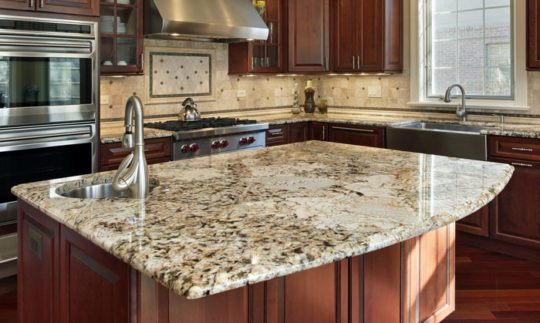
1. Will your surface reflect, or will it absorb light based on your finished product?
2. Will it be porous or impermeable, based on the nature of the natural stone?
3. Will it be light or dark in contrast to other elements in the room based on your design media?
If you choose a designer to assist you with your choices, you will find a world of color and design that will open doors to a variety of possibilities.
Historically, 20th century traditional trends back in the early 50’s through the 70’s was Formica® laminate (a type of plastic composite) and steel as well as Butcher-block and other natural based materials as in concrete. All had to be molded to dimensional size. Coming into the 21st century, we are still using these materials but integrating them into more sustainable durable flooring and countertops. Laminate is now offered in a variety of color choices and patterns to challenge any design or budget. However, you will always get the feel of a man-made product vs. what mother nature offers with real stone. But is this the whole story?
Today’s trends in natural stones will lean towards granite and quartz, two highly regarded types of natural stone countertop surfaces to increase the beauty and value of your home. Granite in its natural state is mined from the earth’s crust where lava once traversed and is made up of several mineral components. It is then quarried and cut into large slabs which can then be fabricated into the countertops we use in kitchen and bathrooms. Quartz countertops are composites mixed with polyester resins, also known as engineered stone. Although beautiful, a quartz counter may not be as impenetrable as a granite top and a reliable countertop installer will tell you the quartz countertop is not heat resistant no matter the brand. Anything over 275° can potentially leave a mark. But both will stand up to scratches well and overall be exceptionally low maintenance. Inclusively, their performance and durability remain about the same. Silestone is the number one leader in quartz countertops but other brands match the same quality and performance, it’s really about what you want in your design to choose for color and pattern variation.
And of course, let us not forget Marble for the bathroom walls, vanities, and shower stalls. Marble is a timeless material that even the ancients of old used in their superior bath houses. With its variations and patina over time, a homeowner can enjoy years of durability and beauty all in one.
When considering a spa-like bath, one where you can “get away from it all” there is nothing like the look and feel of natural stone to calm and soothe. Natural stone retains heat. A heated floor under natural stone feels so comfortable when one gets out of the shower or tub. Warm colored stones also work well with wood tones like teak and walnut used in cabinets and vanities. If cooler tones are preferred, one would choose white or grey tones. Carrara Marble is recommended for a cleaner look with minimal lines.

Other places in the home to show off natural stone can be a fireplace facade. It can be fabricated on a grand scale to cover the wall, the hearth, the mantle, and/or facial wall around the opening of the fireplace itself. It can be as minimal or dramatic as your inspiration allows. Examples of extraordinary stone work for fireplace displays shown here: https://usenaturalstone.org/5-ways-to-use-natural-stone-for-a-show-stopping-fireplace/
One must keep in mind while owning a luxurious natural stone; they all must be maintained to keep their luster and maintain the integrity of the stone. Where this is a natural surface that will be in your home for years to come and will only get better with age, environmentally friendly cleaning products are a suggested use to reduce the chemical impact that often end up in our water supply as a hazardous waste.
Note: Vinegar in your cleaning product can be detrimental to the surface of your granite countertop. Being acidic, it can easily deteriorate the sealant that protects it from stains and etches, not to mention dull the integrity of the finish. General rule of thumb, any cleaner with an acidic base should be considered harmful to your natural stone countertop.
Friendly products should be:
-
Water based
-
Contain no harsh chemicals
-
Produce no toxic fumes
-
Contain no Volatile Organic Compounds (VOCs)
-
Biodegradable
-
Packaging is minimal and recyclable
Let’s face it. Stone is beautiful.
But when one is desiring visual appeal without the hefty price tag, what is available? There are other stone-like materials that should be considered as well. These are man-made products that are composites of several materials such as porcelain, concrete, recycled glass, Corian (a solid surface, non porous, stain resistant man made material), and laminates as previously mentioned. Man-made stone countertops or engineered stone counters are made from quartz crystals and held together with a resin binder. Another similar product would be cultured marble; a combination of pulverized natural marble and synthetic resins and dyes to simulate the veins, coated with a clear hard protective gel.
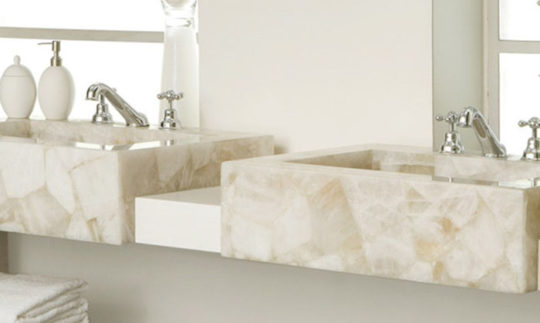
Cultured marble is more durable than natural marble or even granite where granite is a porous material and the cultured marble is solid. Both man-made stone and granite stone compare cost-wise mainly because though one is factory processed, the other mined from the earth and have similar appearances, the fabrication and transporting slabs cost about the same. It’s what you are looking for in the result that will determine the cost by determining depth, textures, patterns, and colors.
Right now, the top four trending man-made stone countertops are:
Cambria Quartz, Caesarstone, Silestone, Zodiac (now called Corian Quartz). This is just to name a few, with so many others to choose from. These four presently dominate the market. The composition of the quartz countertop is basically the same no matter which brand you buy.
Bottom Line: It is what you are looking for in the result that will decide the cost by determining depth, textures, patterns and colors. Choosing one type of material over another will be a matter of taste and budget and what you find appealing. Making sure you have all the choices available to pick your heart’s desire is what makes it all worthwhile. Gable Building Corp has been helping customers fulfilling their dream kitchen and baths for over 25 years. We have helped customers work through the planning details from start to finish. If you are considering a design plan for adding a new space to your home, contact our office either through our website or by calling the number listed on the website. We can help you achieve your goals in adding natural beauty to your new living space.
Foot notes: Data info based on following ideas websites:
Use Natural Stone by Megy Karydes | Mar 24, 2020 | Inspire
https://www.countertopspecialty.com/granite-vs-manmade-stone.html
Photos courtesy of https://globalmarbleandgraniteinc.com/
Should You Replace or Repair Your Roof?
Should You Replace or Repair Your Roof?
How do you know if your roof needs repair or replacement? It is unfortunate that we don’t usually think about it till we have a puddle on the floor or discoloration on our ceiling and walls. By then it’s not only known, but crucial that we find and fix the leaky damage. With luck it may be just a small area but in older homes it can mean replacing the whole roof.
Where do you start to take preventive measures in having a potential catastrophe on your living room carpet?
First place is start inside. Start in your attic. What you’ll need is a flashlight too look up at the eaves. Look for beams of light coming through the top of the house or stains and streaks which means water is getting in past your shingles and roof underlayment.
Secondly, when was the last time your roof was replaced or re-shingled? Having this knowledge and what your roof is made of will offer insight of how much life is left in your current roof. A typical asphalt roof last 20 – 25 years. If your current roof has been installed OVER an existing layer of shingles, it should be replaced after 20 years.
Visible exterior:
Storm damage is often reason to assess for damage. Shingles should lie flat against the roof but patches that are cracked, damaged or buckling would be reason for repair. Also, check gutters and downspouts for shingle granules; a roof that is losing a lot of granules is near the end of its useful life.
This cottage (shown in the first picture below) is near the ocean side in Chatham. The cedar roof had not been replaced in while. It has seen a few Nor’easter storms. The roof shingles no longer lay flat, buckle, and have moss on them. Time for replacement.
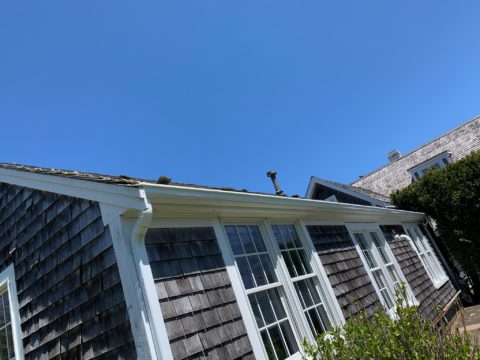
In the photos below, you can see that the old roof shingles have been stripped down to the bare underlayment leaving the old tar paper. This was also replaced with felt paper and then re-shingled with new red cedar as shown in the third photo. Also the flashing used around the roof vent was replaced Copper Flashing as well as W-Valley used where the two roof slopes joined shown in photo#3 .
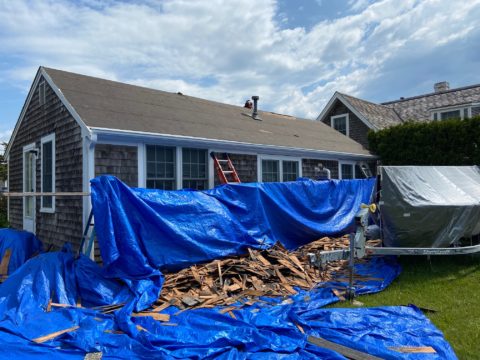
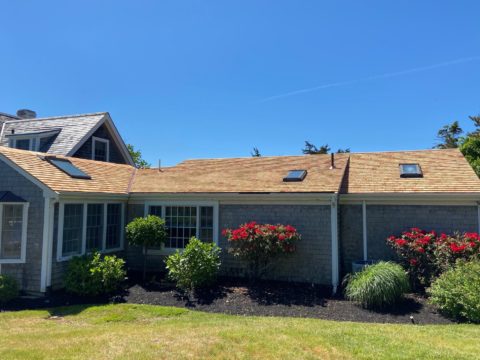
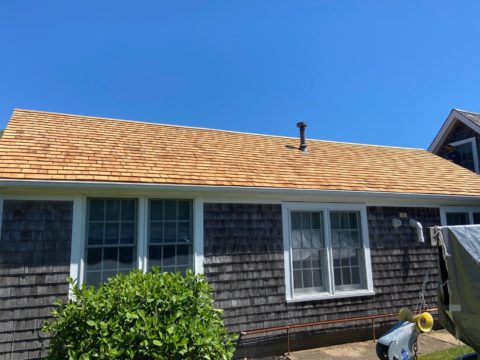
Flashing around vents, skylights and chimneys seal keep the seams of the roof from the weather. At these points it should be determined that there are not any cracks or breaks which could turn into a potential leak. If you have an older home, it’s not uncommon to find roof cement or tar instead of metal flashing. Upgrading to a metal flashing system would add durability.
Other sure tell-tale signs are sagging in the roof where it would need to be determined if you have trapped moisture, rotting boards or other possible signs of damage, especially at the lowest point. Moss (mold and fungi) collected on a roof can indicate trapped moisture (see photo #1). This can be removed with a stiff brush but should be inspected to determine that there aren’t any other underlying issues.
In areas like Cape Cod, where houses can be in regular storm paths, it’s not uncommon to lose a shingle here or there. If you know that your roof is less than 15 years old, routine inspection of your roof can determine that you may just need minor repairs. When in doubt, contacting a licensed roof contractor will help dispel any doubts.
Gable Building Corp. has a long history of roof repairs and replacements for our clients. We can be more than helpful to help you determine what your next step is in repairing or replacing your roof. For asphalt shingles, our “go to” roof shingle is CertainTeed® Asphalt Shingles that come in a wide variety of styles and colors. Specified shingles have lifetime warranties if installed by a professional builder and many come with energy star efficiency with their CertainTeed Roofing Responsibility program. Check out their website to see for yourself: https://www.certainteed.com/residential-roofing/residential-roofing-sustainability/
Common to Cape Cod roofs are also Red Cedar roofs. They offer durability, energy efficiency, damage resistance and a unique beauty. They also come in a variety of grades, stains, and surfaces to satisfy even the most sophisticated home owner. However, being a natural product, routine maintenance is essential to keep your roofs longevity and sustainability.
With these tools and a little basic knowledge, you are now ready to inspect your roof. Or you can always leave it to the professionals by calling Gable building is at your service for not only roof repairs and replacements but a wide variety of other building requests as well. Free estimates given at your convenience. https://gablebuilding.com/contact/
Uncover Hidden Storage Space in Your Hallway
A little bit of notoriety can be a great boost. We have been selected as one contributing contractors of an article on storage saving ideas by a noted designer and contributor for Houzz. http://[houzz=https://www.houzz.com/magazine/uncover-hidden-storage-space-in-your-hallway-stsetivw-vs~79811101 w=300]
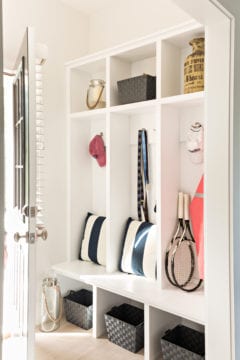
Open Compartments
“Custom built-ins like those shown here (see houzz post) are a bit more of an investment than a free-standing furniture piece or shelves. But they make keeping an organized entryway a snap. That’s because you can design the units to accommodate everything you plan to toss there.”
Nooks and Crannies to Living Space
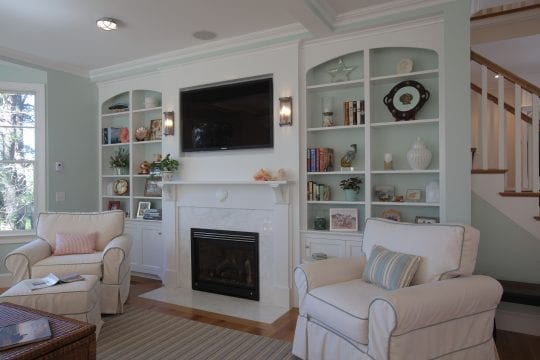
~ Turning Nooks & Crannies into Usable Living Space While Adding Value to your Home
We all have those little alcoves in the house that collect dust bunnies. They were built as part of the room but just don’t seem to be included in the main living area. What can you do with such a space and make it a usable and practical spot that becomes a credit to the rest of the room? With the right ideas in place, nooks and crannies equal built-in usable space.
As you can see in some of these photos provided by Gable Building, when the remodel plan came through, the design included addressing some of these spaces that don’t always get utilized unless a creative purpose was put in place. So when planning a new build or a remodel; making the most of the space can be a benefit to the final appearance of the room and add increased value to your home. Here are some ideas that have been implemented by Gable Building Corp. when remodeling or building from scratch. Keep in mind, the key to marrying the success of the plan to the construction is not only doing the work, but incorporating personal style as well.
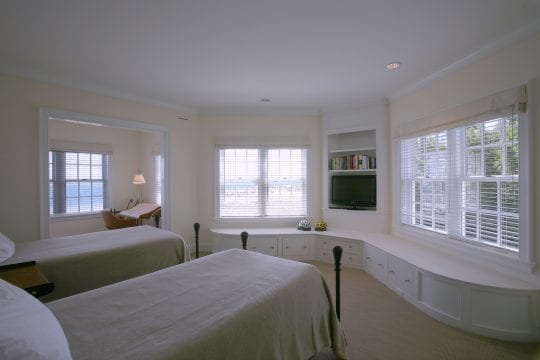
As seen in the photo above, this homeowner wanted built in bookcases on either side of the fireplace and TV to maximize the wall space which turned into a display case in the living room. While these shelves were painted white in keeping with the rest of the interior, there are multiple ways of incorporating wood and glass into your shelving units.
Window seats and attic spaces can always be more livable space when designing more seating or sleeping areas.
A seating area can be added to any room with a spacious view out the window, be it your back yard or a water view; as seen here at left, a bedroom window seat that wraps to the contour of the room
looks out at an ocean view, and the photo at lower right, a window seat in a remodeled bedroom overlooking the backside of the property.

An attic space is a terrific spot to add sleeping quarters for the grand kids when visiting over night.
Need extra bureau space?
A built-in twin bed adds more storage space below as seen here. How about building them between the dormers as seen in this spacious top floor bedroom in these pictures (below#1 & 2)?
Do you have a few nice display pieces but no proper place to present them? There’s always a place for built in shelving that can get really creative from basic custom crafted wood shelves, be them painted or stained to match your décor; or glass shelving with interior lighting where elegance is the key element for displaying your items in splendor. (see photo below#3)

Another neat trick in utilizing vacant space is in the kitchen between appliances and empty cabinet space. How about a glide out narrow shelf unit for those pantry stock items as seen to the right.
Gable Building has been responsible for quality craftsmanship in all these photos showing how you can turn any space into warm and inviting usable space in your home. From open airy to detail and petite, you can make your nooks and crannies into vibrant living spaces for your home. Thinking about additions to your home? Expansion to an existing space can open up those nooks into larger places to engage in your home.
Ideas can be boundless if your dream is given thought and preparation. When it comes to making your building dream come true, Gable Building Corp is the company to call. Let us know your ideas, whether its customizing a small area to make it more usable or expanding by branching out your currently built home. Building beautiful homes is our passion, let us share with your our knowledge and experience and help you make your nooks and crannies into something to admire for years to come in your home.

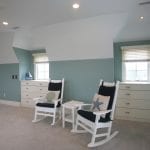
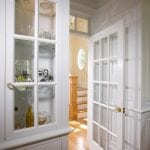
Aesthetics of Natural Light
Ah, the light of day. On a sunny day we are appreciative of the rays of light that shine in the windows and through the doors across the walls and the floors. It brightens up the room and your mood no doubt. More than likely you’re not inside for long on a good day and you get outside to enjoy the sunshine. Those moments are memories we keep fresh in our mind while bearing the rainy days and wintery grey days. If you’re like me, it’s something we’d like to keep with us as much as possible. Even viewing a clear starlit night, or watching the meteor showers spread out across the sky on a hot August night. If you’re able to be outside, that’s a spectacular thing.
But what about the times when the temperature drops and you spend more time inside? Living on the Cape the weather can change often within a 24 hour period. We have to wait a moment to get to the weather we want and either dress in layers or bring extra clothing along to suit the weather. Ok, so that’s what happens when we are outside; back to being inside and keeping the sun in our lives or at least as much day light as possible. Do you have enough light in your room without flipping the switch at 6 am or even at 4 pm? How do we save money long term by adding more light without the use of the light switch? Am I going out on a limb?
You’re thinking about remodeling that back room to extend it into more livable space but it’s a north room and tends to be darker than the rest of the rooms in the house or the use of a connecting hallway that is always dark without turning on a light.  Pictured to the right is an added-on room that had skylights put in the ceiling of an otherwise dark room.
Pictured to the right is an added-on room that had skylights put in the ceiling of an otherwise dark room.
How about adding a skylight to the plan? Or add a skylight to a room you spend time in frequently already; your living-room space, your kitchen… even your bedroom or bathroom. Adding more light from above brings in natural daylight and helps reduce energy bills by providing illumination during the day without turning on the lights. It is also effective when wall space for kitchen cabinetry is a premium rather than adding a window.
Velux windows (www.veluxusa.com) are a great competitor for adding the right window to your home. They have solar powered skylights with size availability to meet your space requirements. They have a rain sensor built in the unit in the event that our inclement Cape Cod weather changes. They even come with internal blinds should you choose to order them.
 In smaller spaces where the ceiling space is at a minimum
In smaller spaces where the ceiling space is at a minimum 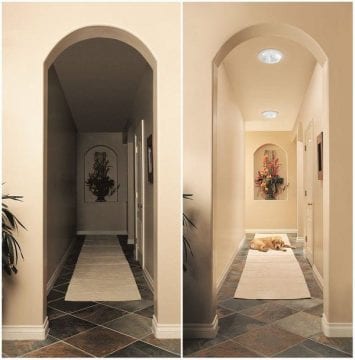 or the ceiling in question isn’t directly under the roofline, there are Sun Tunnels also known as Solar Tubes as alternatives to skylight windows. This design still allows plenty of natural light into the space without taking up too much ceiling space or if you’re unable to connect directly to the roof. Typically these are meant for single story or second story ceilings but it’s not impossible to add right to a first floor room.
or the ceiling in question isn’t directly under the roofline, there are Sun Tunnels also known as Solar Tubes as alternatives to skylight windows. This design still allows plenty of natural light into the space without taking up too much ceiling space or if you’re unable to connect directly to the roof. Typically these are meant for single story or second story ceilings but it’s not impossible to add right to a first floor room.
Looking at the photo to the left you can see how the interior layout of the sun tunnel within the structure is designed and the photo to the right shows the difference between not having a solar tunnel and adding two to an otherwise dark hallway.
Then, for additional creativity, there is the roof window that folds out like a balcony in seconds, often used for lofts and finished attic spaces or even that spare room above the garage. The bonus here is that they are an instant gateway to the outdoors and add an emergency escape exit if ever there were the need. Velux calls this the Cabrio Roof Window. This window closes on the top and the balcony folds inward when not in use and acts as a regular closed sky light; still adding plenty of natural light on a larger scale. (See https://www.veluxusa.com/products/roof-windows/cabrio-balcony for functionality video)
often used for lofts and finished attic spaces or even that spare room above the garage. The bonus here is that they are an instant gateway to the outdoors and add an emergency escape exit if ever there were the need. Velux calls this the Cabrio Roof Window. This window closes on the top and the balcony folds inward when not in use and acts as a regular closed sky light; still adding plenty of natural light on a larger scale. (See https://www.veluxusa.com/products/roof-windows/cabrio-balcony for functionality video)
There are so many possibilities to add more natural light with a variety of ways to accomplish them. Gable Building Corp uses Velux windows in some of the finest quality crafted homes here on the Cape. What will be your next project? Come to Gable and ask design experts what the best choice would be to brighten your home from the roof down and let the sunshine in.
Merging Design with Construction “with as little design as possible.”
Where do your interior design ideas come from? Do you hire an interior decorator or do you wing it yourself at the local Cardi’s, Bernie & Phil’s or something even MORE local like your local thrift store? While they all have your pocketbook at heart, do you really know what you’re looking for in your room design? Think about your style. Is it country carefree, or fashionably chic? Or do you like a project to refurbish or something quick and comfortable that is tastefully adding design to your décor?
Let’s start with the intended room and what it is used for. You have a room that you use for gathering family, friends, and guests of your business. Be it your living room, or kitchen, the flow should blend throughout. While walking from one room to the next the feeling should be one of continuity, including color scheme, furniture design and/or proportioned space to move around. We’ve all been in that one house where there’s too much in one space and you feel uncomfortable. Interior design is more than just creating furnishings in a space, its creating a comfortable space to inhabit within your abode.
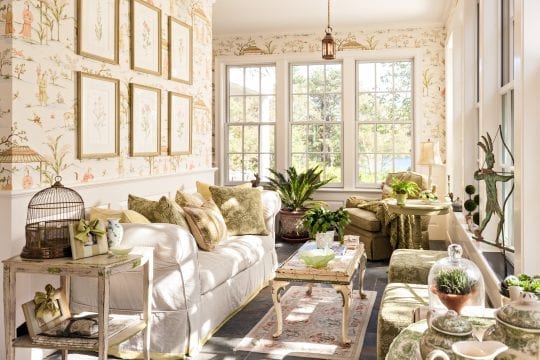
To quote H.C. Dieter Rams, “Good design is as little design as possible,” meaning: the simpler the better. Great furniture pieces are timeless and their style lasts forever. Even though it’s nice to update from time to time, you can always find a quality piece that sticks with you and build upon it with newer pieces around it. He has 10 commandments for designs to work:
It’s innovative, useful, aesthetically pleasing to look at, can be understood, is unobtrusive, honest, long-lasting, thorough in its details, environmentally friendly and last but not least, involves as little design as possible. https://www.interaction-design.org/literature/article/dieter-rams-10-timeless-commandments-for-good-design
Of course, simplicity sometimes comes with a price. And it’s often a piece that you will buy once in a lifetime. That is where good decisions are made at the forefront of the sale. Good decisions are based what the intended use and longevity of the unit will be. We all know that when we have kids, furniture life is not necessarily going to have the life expectancy of their childhood. But a quality piece will certainly stand up to family wear. So you want to be looking for long-lasting, at least till your kids get to college. But then, after they are in college, perhaps an update is at hand and you want to create a more grown-up atmosphere in your space. Now, you can invite the rest of those ten commandments into your home design.

Maybe at this point you will want to be encouraged by a professional design expert. When you come to the point where you are ready to create a new feeling in your surroundings, you might even decide to add on or redesign your existing home all together to create a more open floor plan. And sometimes you need to get your ideas from one piece of furniture that will sprout a whole new beginning to living in a grand space of your own creation. Gable Building has been doing this for families across the Cape since the early 90’s creating custom designs for homeowners’ one dream at a time. They will start with your ideas and work with you till the finished product is complete and tastefully created based on your ideas and continue to work with you till you are 100% satisfied. And sometimes, it starts with just one piece of furniture.
Historic Renovations Receives Gold BRICC Award and Chatham Preservation Award
Originally built in 1850, this antique home had four bedrooms and two baths with about 1,211 square feet of living space. Literally steps to the beach with fantastic views from Nantucket Sound located in the “Old Village.”
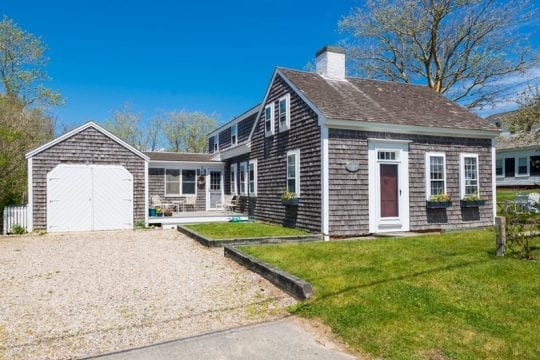
http://www.capecodbuilders.org/winners-list-2016-bricc-awards.html
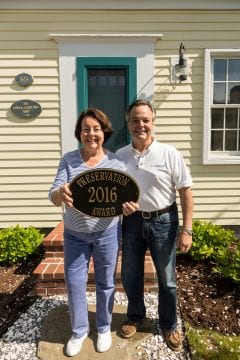

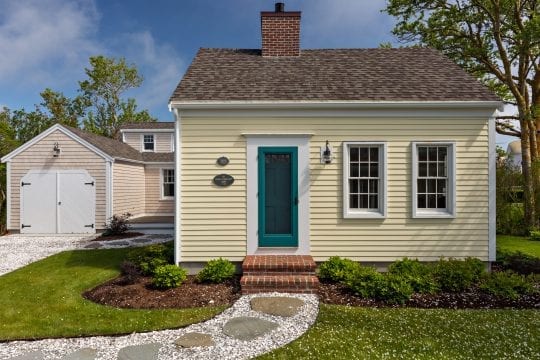

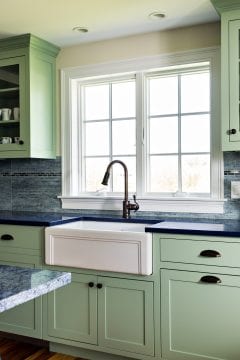
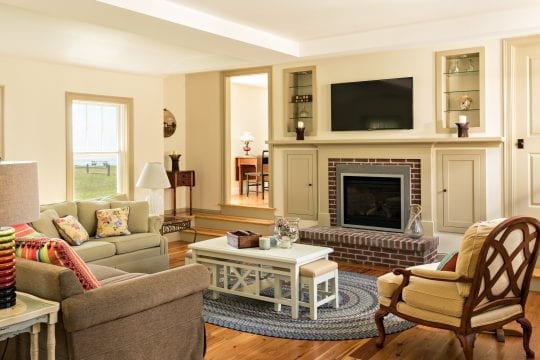
Open vs. closed cell foam insulation

Open vs. Closed Cell Foam
We get this question all the time when we talk to people about their insulation choices.
Both open and closed cell spray foam insulate by trapping air or gas in a plastic matrix, but that’s where the similarities end.
Open-Cell

Open-cell foam costs slightly less for the same thickness, but offers a lower R-value. The blowing agent used to install open-cell insulation is water, which reacts with air to become carbon dioxide. Because CO2 expands quickly, the bubbles tend to burst before the plastic sets — hence “open cell” — producing a spongy, lightweight foam. Because the open cell structure allows some vapor to pass through, open-cell foam is a good choice in hot, humid climates, and under roof sheathing, such as in conditioned attics, where water vapor caught between insulation and sheathing could promote wood rot.
Closed-Cell

Unlike open-cell foam, closed-cell foam uses liquid chemical blowing agents. These gasses expand as they are applied, but not as quickly as CO2, allowing the polyurethane plastic to set before the bubbles burst. This yields dense foam weighing nearly 2 pounds per cubic foot and without the capillary characteristics of open-cell, it remains impermeable. The blowing agents perform like the inert gasses between the panes of high-performance windows, adding to the insulating qualities of the foam. Unlike open-cell foam, closed-cell foam rarely requires any trimming, with little or no jobsite waste.
Closed-cell’s obvious advantages compensate for its slightly higher price tag. It provides both a vapor and an air barrier, and offers an aged R-value of a whopping 6.5 per inch. Due to its dense, glue-like consistency, it remains very strong, increasing the racking strength of walls by as much as 300%, according to the National Association of Home Builders Research Center. (These structural properties are not acknowledged by current building codes, so you can’t reduce structural bracing.) Because water doesn’t penetrate or degrade the product, the Federal Emergency Management Agency recommends closed-cell for flood regions.
Spray foam costs more than traditional insulation but it can be a very cost effective way to build high-performance homes and meet stricter energy codes.

Entry Refresh “Featured on Houzz”
Midcape Home Show Coming Up!
Lumber & Building Supplies • Paint • Hardware • Kitchens & Baths • Windows & Doors • Flooring & More!
Come in to one of our locations and meet with one of our experts specializing in Kitchen & Bath Design, Flooring, and Millwork. Servicing both the homeowner and contractor as the place to go when planning any home improvement project.
Join Us

Do you use oil to heat your home?
Homeowner Oil Heating System Upgrade and Insurance Law
Introduction
This fact sheet contains important information for those who heat their homes with oil. By September 30, 2011, you must upgrade your home heating system equipment to prevent leaks from tanks and pipes that connect to your furnace. By making a relatively small expenditure now, you can prevent a much greater expense in the future.
Massachusetts has a new law to address oil leaks from home heating systems (Chapter 453 of the Acts of 2008, as most recently amended in 2010). This law has two major provisions that require:
- the installation of either an oil safety valve or an oil supply line with protective sleeve on systems that do not currently have these devices; and
- insurance companies that write homeowner policies to offer coverage for leaks from heating systems that use oil.
Most homeowner policies do not currently include such coverage, leaving many to pay for costly cleanups out of their own pocket. Although it is mandatory that insurance companies make this coverage available by July 1, 2010 to homeowners whose systems are upgraded, the insurance is an optional purchase.
Who must take action?
Owners of 1- to 4-unit residences that are heated with oil must already have or install an oil safety valve or an oil supply line with a protective sleeve, as shown in the diagram above. Installation of these devices must be performed by a licensed oil burner technician. Technicians are employed by companies that deliver home heating oil or are self-employed. It is important to note that heating oil systems installed on or after January 1, 1990 most likely are already in compliance because state fire codes implemented these requirements on new installations at that time.
Who is exempt?
Homeowners are exempt from taking these leak prevention steps if:
- the oil burner is located above the oil storage tank and the entire oil supply line is connected to and above the top of the tank OR
- an oil safety valve or oil supply line with protective sleeve was installed on or after January 1, 1990, AND
- those changes are in compliance with the oil burning equipment regulations; a copy of the oil burner permit from the local fire department may be used to demonstrate compliance.
Why comply?
Not only is complying with the new law required, it makes good financial and environmental sense. Homeowners who take these preventive measures can avoid the disruption and expense that can be caused by heating oil leaks. A leak may result in exposure to petroleum vapors in your home. If the leak reaches the soil or groundwater beneath your house, then a cleanup must be performed to restore your property to state environmental standards. Leaks that affect another property or impact drinking water supply wells can complicate the cleanup and increase the expense. Each year, several hundred Massachusetts families experience some kind of leak.
What will an upgrade cost?
The typical cost of installing either an oil safety valve or oil supply line with a protective sleeve ranges from $150 – $350 (including labor, parts, and local permit fees).
What could it cost to cleanup a leak?
The cleanup cost for a “simple” leak can be as much as $15,000. In cases where the leak impacts the groundwater or is more extensive, the cleanup costs can reach $250,000 or more.
What kind of insurance is available?
To be eligible for the new insurance coverage, homeowners must ensure that their oil heating systems are in compliance with the new law. Homeowners who have been certified to be in compliance with (or exempt from) the leak prevention measures qualify to purchase insurance that:
- provides “first party coverage” of at least $50,000 for the cost of cleaning up a leak to soil, indoor air, or other environmental media from a home heating system at the residence itself and reimbursement for personal property damage, AND
- provides “third party coverage” of at least $200,000 for the cost of dealing with conditions on and off the insured’s property because the leak from this system has or is likely to impact groundwater or someone else’s property. The coverage also includes costs incurred for legal defense, subject to a deductible not to exceed $1,000 per claim.
What should I do next?
- Determine whether you have had an oil safety valve or new oil supply line with protective sleeve installed since January 1, 1990. If you have, your permit from the fire department for the installation can be used to document your compliance. You can request a copy from the fire department if the permit is on file, or a licensed oil burner technician can certify that status on a form.
- If you do not have an oil safety valve or oil supply line with protective sleeve in place, have one or the other installed and certified. Either contact your oil delivery company to ask if they employ a licensed oil burner technician or call Gable Building Corp.
- Consider buying insurance coverage for the cleanup of a leak.
- Determine whether your existing policy provides oil leak coverage.
- If it does not, consider calling your homeowner insurance agent to amend the policy to include this coverage.
For more information please check out the Massachusetts DEP website.
Chatham Preservation Awards
On Sunday, May 16th, Gable Building Corp. was excited to accept an award from the Chatham Historical Commission. This program honors the efforts of the homeowners, builders and designers that preserve Chatham’s historical residences. This will be our second consecutive year to receive this award. This years recipient was Sandra Goldman of 820 Main Street. The goal was to preserve and restore the historical importance of the home, and provide a habitable residence functional to the needs of the modern family.
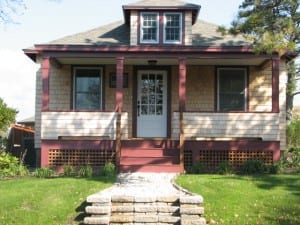
This home is strongly believed to be a 1920’s Sears and Roebuck, bungalow-style, catalog home. This style home is very uncommon of the area and is one of only two remaining in Chatham. In 1895 Sears had created a “Modern Homes” division catalog. From this catalog you could conveniently order a whole house for around $2,000! After a style was selected, Sears would crate and palletized the entire house with numbered building materials, detailed plans and instruction manuals, paint and fasteners, then ship by railroad to anywhere in the United States. For more information on the history of the Sears kit home see: http://www.arts-crafts.com/archive/sears/
The new home addition was designed by Zibrat and McCarthy in a manner that best preserved the streetscape elevation and interiors. The rear section of the original house had two additions built at an unknown date. It was determined to be of no historical significance by the Historic Business District Commission. Sandra Goldman was granted the permission for the demolition of the rear section of the home, detached garage and shed. With the expansion confined to the back of the property, and roof lines lower than the front elevation ridge, the proposed additions were deemed “architecturally compatible with the existing dwelling” by HBDC. Additional historical research and deeds of the property was provided by Nancy Barr, of Chatham.
Throughout the demolition and construction of this project, Gable Building Corp. matched or restored many of the historical elements. Samples were requested, and submitted for approval, to the Historic Business District Commission.
Main areas of focus included:
Exterior
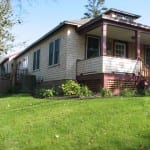

- All original windows and doors were replaced with a matching Anderson unit.
- Cedar shingle sidewall matched
- Exterior trim detail and paint colors matched
- Exterior light fixtures replace to match
Interior


- Kept existing floor plan and layout
- Sand and refinish trim in existing areas to include the columns, built-ins, interior doors, hardware, casings and baseboard.
- Preserve, repair and expose the original chimney
- Match and refinish heartwood pine flooring
Original iron 4 x 4 register was salvaged from floor. It was later fabricated by a local Metal Smith, Rusty Griffin, into a custom coffee table to be displayed in the home. See picture below.
We understand the importance of preserving the dynamic history and culture of Chatham.Clearly, the history of this home was the priority in this restoration. All parties involved appreciated the historical significance of this project and approached it in a sensitive manner.
If interested in preserving and restoring your historical project, give Gable Building a call.
Written by April Pond
Spring into Green Cleaning!
This season always brings around those long and evil “To Do” lists. If you are anything like me, I guarantee that some major cleaning projects are at the top of that list. This year, why not adopt safe cleaning practices with safe cleaning products in your home? Many of the cleaning products that have become household standards are surprisingly harmful to your health and the environment.
The good news is that you can make your own natural cleaning products with supplies already in your cupboards. Not only will these homemade concoctions save you money, but will be healthier for you, your children, pets and the rest of your environment.
Having a small child in our home has pushed me to research the subject and I have found and tested some great cleaning recipes. I have already begun replacing some brand name spray bottles from under the kitchen sink and I haven’t looked back yet. Below are a few of my new favorite ingredients and recipes.
Ingredients:
White Distilled Vinegar – I never knew how many different uses there was for this product. I have started buying this stuff in bulk at discount stores. It seems to be my answer to just about everything!
Lemons – This universal fruit is good to have in the house at all times. With a relatively long shelf life (about a week or two at room temperature and up to a month in the refrigerator), you can place them in a fruit basket or pile them into a decorative vase or bowl, until they are needed. They can be used as flavoring in meals and drinks, deodorizing a room and they have natural bleaching and antibacterial properties.
Baking Soda or Borax – Great scrubbing power and deodorizer.
Liquid Dish Soap – Most cleaning can be done with just good old fashion soap and water. Check that your dish soap does not contain phosphates, chlorine, fragrances, dyes or surfactants.
Olive Oil
- Can be used on any polished wood products. With just a few squeezes of lemon you get the scent you are accustomed to. Really any kind of oil will work here
- Vegetable oil, mineral oil, lemon oil, etc.
Cleaning Recipes:
Glass Cleaner – This, by far, has to be the easiest product to replace! The hardest part for me was accepting that the beautiful blue color, that I had become so accustomed to working with, was not a factor in cleaning power. Honestly, not only do I faithfully use this universal cleaner for all glass in my home, but my whole kitchen is wiped with this mix – counter tops, stoves, inside the refrigerator, etc. I also use it in showers to cut through the mildew. Most window cleaners contain high levels of ammonia which is both caustic and hazardous.
Safe Alternative
- 50/50 – white distilled vinegar and water – Aerosol cans packed with wonderful fruity and flowery fragrances, formaldehyde, allergens and toxic Volatile Organic Compounds. Some actually act as anesthesia, coating your nasal passages with a film that blocks your sense of smell. These products are one of the most heavily marketed cleaning items and completely unnecessary!
Safe Alternative
- Ventilation! Open windows and turn on fans
- If tough cigarette or cooking smells like fish or meat are lingering. Boil a mixture of vinegar and water on the stove for 5 minutes
- I have also left out a saucer of vinegar in other rooms to absorb offensive smells
Floor Cleaner– Although it is hard to find out information on the ingredients of some cleaners, the fact that they are a skin and lung irritant is enough to persuade me to use something else. I used this last week and was amazed at the cleaning power!
Safe Alternative
- Sink or bucket full of HOT water
- Liquid dish soap (just a squirt)
- 1 cup vinegar
- A few sliced lemons and juice
Disinfectants – Found to contain cresol an agent that could cause potential harm to liver, kidneys, blood, brain and lungs. The only way to truly disinfect something is to boil in water for five minutes. For larger areas, like bathrooms surfaces see below.
Safe Alternative
- Undiluted Vinegar kills 99 percent of bacteria, 82 percent of mold, and 80 percent of germs (viruses)
- Follow with a fine mist of Hydrogen Peroxide for extra power
OR
- Bucket or sink of Hot Water
- ½ cup Borax
Rinse Aid (Jet Dry)
– This is one of my favorites! An expensive agent used to help with the spots that water and soap will leave on glass. Rinse aids contain surfactants. Some environmentalists argue that when they these agents are washed down the drain they become a direct threat to the animals, ecosystems, humans and also act as a bridge for other contaminants to cause further damage.
Safe Alternative
- Put 100% vinegar in the rise aid compartment-that’s it, spotless dishes!
Carpet Freshener – Most of the flowery and fresh scented powders and sprays have unnecessary additives and fragrances.
Safe Alternative
- Sprinkle baking soda generously on the carpet and vacuum up an hour later.
In an effort to protect “trade secrets”, cleaning products are not required by law to list ingredients. These products don’t list them voluntarily for a reason. Many products that claim to be environmentally safe fail to provide back up. If a chemical product is absolutely necessary, open windows or turn on fans to get the air circulating and the fumes out.
The list is endless for the substitution of toxic cleaning products. Think twice the next time you grab that cleaning bottle! Remember many areas can be cleaned with a simple soap and water solution and with just a little bit of research and time you could potential save yourself and your home environment by preventing these deadly exposures.
For more information we recommend you read Home Safe Home by Debra Dadd and The Guide to Green Housekeeping by Christina Strutt.
Written by April Pond
Haiti Earthquake Relief Fund
Haiti Earthquake Recovery
In an effort to help with the terrible disaster that devastated Haiti on January 12th Gable Building Corp is collecting money at our office for Hope for Haiti. 100% of all donations will go directly to a disaster relief team currently on the ground.
Gable will match all donations up to $1,000!
Please donate what you can, every little bit helps. Make checks out directly to Hope for Haiti and drop off at the office.
HELP spread the word to others!
For more information about Hope For Haiti check out their website http://www.hopeforhaiti.com/
For more information about the charity or any questions please contact April at Gable Building – 1291 Main Street, Chatham, MA 508-945-4002 [email protected].
Home Buyers Tax Credit Extension
 It’s official! On November 6th, President Obama signed the home buyer tax credit extension and expansion into law.
It’s official! On November 6th, President Obama signed the home buyer tax credit extension and expansion into law.
This is fantastic news for home buyers and the construction industry as a whole! Not only does the 8k apply for the first time home buyer, but now a modified credit has been expanded to incorporate any home buyer that meets the prerequisites. The new law extends the deadlines – signed contract by April 30, 2010 and closings by June 30, 2010.
To see the requirements and new deadlines check out an excerpt from NAHB website below.

Who is Eligible
- First-time home buyers, who are defined by the law as buyers who have not owned a principal residence during the three-year period prior to the purchase, may be eligible for a tax credit of 10% of the home purchase price, up to a maximum of $8,000.
- Existing home owners who have been residing in their principal residence for five consecutive years out of the last eight and are purchasing a home to be their principal residence (“repeat buyer”), may be eligible for a tax credit of 10% of the home purchase price, up to a maximum of $6,500.
- All U.S. citizens who file taxes are eligible to participate in the program.
Income Limits
- Home buyers who file as single or head-of-household taxpayers can claim the full credit ($8,000 for first-time buyers and $6,500 for repeat buyers) if their modified adjusted gross income (MAGI) is less than $125,000.
- For married couples filing a joint return, the combined income limit is $225,000.
- Single or head-of-household taxpayers who earn between $125,000 and $145,000, and married couples who earn between $225,000 and $245,000 are eligible to receive a partial credit.
- The credit is not available for single taxpayers whose MAGI is greater than $145,000 and married couples with a MAGI that exceeds $245,000.
Effective Dates
- The eligibility period for the tax credit is for homes purchased after Nov. 6, 2009, and before May 1, 2010. However, home purchases subject to a binding sales contract signed by April 30, 2010, will qualify for the tax credit provided closing occurs prior to July 1, 2010.
Types of Homes that Qualify
- All homes with a purchase price of less than $800,000 qualify, including newly-constructed or resale, and single-family detached, townhomes or condominiums, provided that the home will be used as their principal residence. Vacation home and rental property purchases do NOT qualify.
Tax Credit is Refundable
- A refundable credit means that if the amount of income taxes you owe is less than the credit amount you qualify for, the government will send you a check for the difference.
- For example:
- A first-time buyer who qualifies for the full $8,000 credit who owes $5,000 in federal income taxes would pay nothing to the IRS and receive a $3,000 payment from the government. If you are due to receive a $1,000 refund, you would receive $9,000 ($1,000 plus the $8,000 tax credit).
- A repeat buyer who owes $5,000 would pay nothing to the IRS and receive $1,500 back from the government. If you are due to get a $1,000 refund, you would get $7,500 ($1,000 plus the $6,500 tax credit).
- All qualified home buyers can take the tax credit on their 2009 or 2010 income tax return.
Payback Provisions
- The tax credit is a true credit. It doesnot have to be repaid unless the home owner sells or stops using the home as their principal residence within three years after the purchase.
For more information, go to: www.federalhousingtaxcredit.com.
To take advantage of this fantastic tax credit and to do your part to boost the economy, purchase a new home TODAY!
In these tough times we can help assist and establish a realistic budget and schedule for your project today. Feel free to contact Gable Building Corp http://gablebuilding.com/ for additional information.
The Cape Cod Harvest
 This truly is a beautiful time of year on Cape Cod and one of our favorite seasons. The congestion and excitement of the summer visitors dissipate. Left behind is the beautiful tranquil beaches, plenty of festivals and art fairs, and popular restaurants available without reservations. For many of us that live here year round this is the perfect opportunity to get out and explore.
This truly is a beautiful time of year on Cape Cod and one of our favorite seasons. The congestion and excitement of the summer visitors dissipate. Left behind is the beautiful tranquil beaches, plenty of festivals and art fairs, and popular restaurants available without reservations. For many of us that live here year round this is the perfect opportunity to get out and explore.
The Cape is typically blessed with an extended, warm, fall season and the weather usually cooperates with the many outdoor activities. Below is a just a sample of the many festive offerings this season.
Fall for Harwich
September 10th – October 12th
http://www.harwichcc.com/fall-for-harwich.php
Barnstable County Harvest Festival
Barnstable County Fairgrounds, Rte. 151, East Falmouth
10/03/09 to 10/04/09 10:00am
http://www.barnstablecountyfair.org/harvestfest/index.html
Yarmouth Seaside Festival
Route 28, Yarmouth
10/10/09 to 10/12/09
http://www.yarmouthseasidefestival.com/
2nd Annual Oktoberfest Cape Cod
Aqua Grille, Sandwich
10/11/09 1:00pm – 5:00pm
Wellfleet Oyster Fest
Wellfleet
10/17/09 to 10/18/09
http://www.wellfleetoysterfest.org/
Cape Cod National Seashore Ranger Guided Fall Activities
http://www.nps.gov/caco/upload/2009earlyfallthrou1031.pdf
All of us here at Gable Building Corp. http://gablebuilding.com/ are excited about the fall. This is the most productive time of year for us, and we are looking forward to the busy season ahead.
Innovative Green Sheathing
Have you noticed new homes springing up around Cape Cod with green sheathing exteriors? Well, it isn’t just a pretty, green-colored panel, made to blend into the surrounding trees. These homes are being built with an OSB product called ZIP System®.
It is an innovative product created by Huber, the creators of AdvanTech. This new approach to sheathing homes is a greener alternative to the typical 1/2″ plywood or 7/16″ standard oriented strandboard (OSB).
Plywood and OSB products have been side by side on the comparison charts for years. Although OSB is a cost effective alternative to plywood, Gable Building has preferred to use plywood sheathing. It has always been the traditional way to build and a lot of the “old timers” will use nothing else. Additionally, prolong exposure to weather resulted in OSB swelling and it also took longer to dry out than plywood.
Today OSB manufactures are aware of these issues and have improved their products. ZIP System® has created a moisture resistant board and taping system that negates the extra step of applying a weather resistance house wrap after the panels are hung. I can already see the smiles radiating from the jobsite carpenters across the Cape! This one-step process could eliminate possibly a days worth of frustrating work. Plus, most importantly, the panels are protected the minute they are installed.
With more and more buzz about green building, building efficiency and sustainable product selections, new products are popping up everywhere. We are doing our homework here at Gable Building in order to provide better service to our clients.
We have talked to our suppliers and field personnel and found many other wonderful benefits of this new innovative product. If interested in using this product in your new home, remodel or addition give Gable Building Corp. http://gablebuilding.com/ a call. ZIP System® website http://www.zipsystem.com/ for additional information.
Preparing for Green
 Last week two Gable employees attended a two day Certified Green Professional (CGP) seminar in Westborough, MA. It was the first two courses of the series. To earn the designation the requirements entail 3 courses (24 hours total), followed by a test. To maintain the CGP designation you are required to complete twelve (12) hours of continuing education every three years. The Gable employees plan to take the final course at the end of this month.
Last week two Gable employees attended a two day Certified Green Professional (CGP) seminar in Westborough, MA. It was the first two courses of the series. To earn the designation the requirements entail 3 courses (24 hours total), followed by a test. To maintain the CGP designation you are required to complete twelve (12) hours of continuing education every three years. The Gable employees plan to take the final course at the end of this month.
This program, developed jointly by the National Home Builders Association and the International Code Council, is a relatively new designation formally approved January of this year by the American National Standards Institute.
Similar to the well know USGBC LEEDS certification, this is a new alternative, user-friendly program, with a relatively corresponding point system. CGP approaches the Green Building industry with practicality and cost effective procedures, all the while maintaining the same green building guidelines as LEEDS.
The main areas of focus for this green certification are as follows :
- Land conservation and environmental mitigation;
- Site design, remediation, and lot orientation;
- Resource efficiency (e.g., use of recycled and locally-available materials);
- Rainwater collection;
- Construction of smaller homes to conserve resources;
- Energy performance starting at 15 percent above the baseline requirements of the 2006 International Energy Conservation Code;
- Use of low-VOC materials and detached garages or carports to improve indoor air quality; and
- Homeowner education on proper maintenance and operation to maintain green benefits throughout the life cycle of a home.
If interested in building a green certified home, please contact Gable Building Corp http://gablebuilding.com/ to find out more information.
To learn more about this exciting program watch the video NAHB\’s Green Building Program VIDEO
Green Living
Our clients and the relationship we form with them during the building process is top priority to us here at Gable Building Corp. Below are some suggestions that may be useful for YOU-the client in deciding how and where do go GREEN in your new home:
- Would you like your home to be built by Energy Star standards?
- Do you have allergies or health concerns that should be taken into consideration in regards to the type of materials you may choose?
- Can we assist you in selecting appliances and lighting that will reduce your monthly energy bills?
- Are you interested in using recycled products or sustainably-harvested wood in your home?
Just a few suggestions! Feel free to contact us directly for more suggestions or plan to meet our team of experts personally at our office in Chatham,MA. to assist you with remodeling your existing home or building your dream home!
Ideas… And More Ideas
EVENTS ON CAPE COD NOT TO BE MISSED……
Tuesday, July 14, 2009
HOME SWEET HOME
Nothing stirs us more than the thought of “home”. We spend a lot of time in our homes. It’s where we retreat from the world to relax, where we entertain friends and family and where we raise our children. No wonder we spend so much time looking for the best products and services to make our homes more comfortable and functional for our needs.
Now you can save time from searching with all the experts under one roof at the Cape Cod Life Home & Garden Expo.
For more information contact:
Hillary Portell
509-775-9800 x 34
[email protected]
Amy Duquette
508-775-9800 x 35
[email protected]
Coastal Homeowner’s Insurance
So you have your dream home being built and your working hand in hand with your team at Gable Building Corp. Any information you may need or want o find out in this process has been provided, but have you thought about your choices for insuring your beautiful Coastal home? Do you have a lot of choices?
Cape Cod is a unique part of the East Coast:
- Windy weather
- Humidity
- Abundant coastal properties
- Conservation land
- Wildlife
Not all homes here on Cape Cod can be insured the same as other parts of the country, and as I was reading through the latest issue of Cape Cod Homeowners Resource Guide, I came across information from Narragansett Bay Insurance Company. A company that is apparently, specifically designed to meet the needs of Coastal home owners. Check them out.
Why Choose Chatham For Your Next Home?
 About Chatham
About Chatham
Zip Code – 02633
2009 Population: 6,502
Chatham was discovered in 1606 by the French explorer Samuel de Champlain, but was not settled until 1656. Originally named “Monomoit” after the Indians who were the first inhabitants, Chatham was incorporated into a town in 1712 and is the easternmost land in the United States. The location was great for the thriving fishing industry, but vulnerable during the Revolutionary and Civil Wars, as it was a convenient harbor for the enemy to occupy.
In the late 1880’s the railroad made the trip to Chatham desirable and the area developed in favor of tourism. Downtown Chatham is charming, with a myriad of shops, galleries, restaurants and inns. Chatham has quite an off-season character, as well. From “Christmas by the Sea”, to the very popular Chatham “First Night” and the “Spring Fling” held in May, there is something here for everyone!
Besides steeped in history, our quaint seaside village is home to many successful Entrepeneurs, Architects, Seaside Landscape Designers and Interior Designers. All of whom are right here, available to meet your needs as a new home buyer.
Whether Gable Building is building your dream home or renovating it, we have all the right connections to make your experience here in Chatham a special one.
HD Living
 You’ve chosen your tile, the type of wood floors you’d like to have, and every other aspect and detail for your new Gable Building dream home.
You’ve chosen your tile, the type of wood floors you’d like to have, and every other aspect and detail for your new Gable Building dream home.
What about how you entertain? Choosing the perfect HD theater for your new home is important, and “Being Green” is the way to go!
Here some tips to help guide you down the “HD Electronic” path.
- Select an eco-friendly LED TV that has panels that use up to 40% less power than conventional LCD televisions
- Purchase surge protectors that provide clean, eco-conscious filtering
- Think about purchasing The Sony XEL-1, the company’s first OLED(organic light-emitting diode) TV, that conserves energy by eliminating the need for a backlight, while providing a quality picture
Luxury Home Builder in Cape Cod
When spending several million dollars on a home, you want it to be perfect. That’s why prospective buyers consult with Gable Building to consider building their dream home, rather than buy an existing property in Cape Cod.
If you’re going to spend a lot of money decorating or furnishing a luxury home and will live there for a length of time, you want it to really work for you.
And many real estate agents in Cape Cod, MA say many of their luxury clients feel the same way. “You get the floor plan you want; you get the materials and quality you can afford to pay for. If you want a dream home, the only way to get a dream home is to design it yourself with a team that offers full design and build capabilities like Gable Building.”
Consider these factors when custom building your luxury home:
- Choose a Site and Builder
- Calculate Each Detai
- Build for Function
- Design to Protect
- Plan for Resale
Contact Gable Building today to discuss the luxury home of your dreams.
Building a Waterfront Home in Cape Cod, MA
Before you invest in building a waterfront home on Cape Cod, spend some time thinking about your expectations, and bring your ideas to Gable team.
- Are you looking for a quiet and private retreat to get away from it all, or a place that is closer to more urban conveniences?
- What activities do you plan on doing at your new Waterfront home (enjoying a natural, private setting, surrounded by lush landscaping, having access to your own private dock for fishing and boating or is your beautiful home sitting majestically overlooking the Atlantic Ocean?
For over 35 years, Gable has assisted clients by meeting and going beyond their expectations. We work with talented architects who help you custom design your home. We offer choices of products specifically designed for waterfront living and our team of experts help guide you through each stage. Can’t be on Cape to see your home’s progress? Having access to our Project Viewer involves you in stage by stage decisions that may need to be made for your waterfront home. Start to finish.
Waterfront home ownership…your investment and commitment to preserve the natural beauty here on Cape Cod, for years to come.
At Gable Building, we understand the benefits and rewards of living in a Waterfront home on Cape Cod. Call or email us today to learn more about the benefits of building a waterfront home in Cape Cod.


